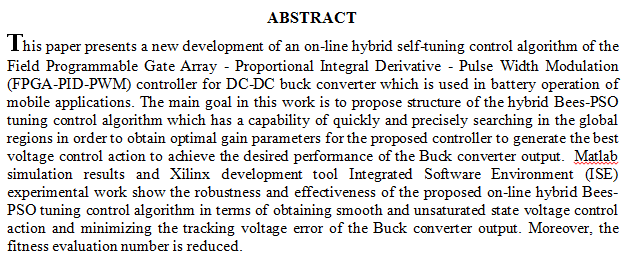
This paper presents an experimental and numerical study which was carried out to examine the influence of the size and the layout of the web openings on the load carrying capacity and the serviceability of reinforced concrete deep beams. Five full-scale simply supported reinforced concrete deep beams with two large web openings created in shear regions were tested up to failure. The shear span to overall depth ratio was (1.1). Square openings were located symmetrically relative to the midspan section either at the midpoint or at the interior boundaries of the shear span. Two different side dimensions for the square openings were considered, mainly, (200) mm and (230) mm. The strength results proved that the shear capacity of the dee
... Show More (19)
(19)
 (17)
(17)
This study was carried out to investigate the cytogenetic effects of crude aqueous extract of Lycium barbarum on the roots tip of Allium cepa Using three concentration 125, 25, 50 mg/ ml for 2, 4, 6 hours treatment periods.This study were included some cytogenetic analysis such as mitotic index , phase index and chromosome aberration. The data showed that the treatment with 50mg/ml for 6huors led to reduce the mitotic index less than 50% . This reduction considered to have toxic and sublethal effect . These results revealed mutagenic potency by inducing differents type of chromosome aberration.
One hundred twelve urine samples were collected from Baghdad hospitals and examined by different identification techniques. Seventy isolates (62.5%) were diagnosed as Escherichia coli after microscopic and cultural identifications. The result of PCR product electrophoresis on the isolates showed that thirteen isolates (18.57%) have Pap E gene which are uropathogenic E. coli. Antibiotic susceptibility test was done, and four high resistant strains were mixed with aqueous extract of Quercus infectoria plant in 96 well ELISA plate and incubated for different times. After 0, 6, and 12 hr. of incubation, the effect of the plant extract on the bacterial growth was determined by ELISA reader, and the effect on the expression of P
... Show More (9)
(9)
 (6)
(6)
جريت دراسة مختبرية لمعرفة تأثير الزيت الطيار لقشور ثمار نبات النارنج الصفرC. aurantium تجاه النمو السطحي للفطريات Penicillium expansum، Aspergillus flavus و Fusarium oxysporum ، أظهرت نتائج الفعالية التثبيطية للزيت الطيار تأثيراً معنويا متفاوتاً في الفطريات المشمولة بالدراسة، إذ كان الزيت الطيار أكثر تأثيرأَ في الفطر P. expansum تلاه الفطر A. flavus ،في حين كان الفطر oxysporum F.أقل حساسية تجاه الزيت الطيار. بصورة عامة اظهر الزيت الطيار تأثيرا تثبيطيا
... Show MoreIn this paper, a simulation of the electrical performance for Pentacene-based top-contact bottom-gate (TCBG) Organic Field-Effect Transistors (OFET) model with Polymethyl methacrylate (PMMA) and silicon nitride (Si3N4) as gate dielectrics was studied. The effects of gate dielectrics thickness on the device performance were investigated. The thickness of the two gate dielectric materials was in the range of 100-200nm to maintain a large current density and stable performance. MATLAB simulation demonstrated for model simulation results in terms of output and transfer characteristics for drain current and the transconductance. The layer thickness of 200nm may result in gate leakage current points to the requirement of optimizing the t
... Show More (2)
(2)
 (1)
(1)
In this study, simply supported reinforced concrete (RC) beams were analyzed using the Extended Finite Element Method (XFEM). This is a powerful method that is used for the treatment of discontinuities resulting from the fracture process and crack propagation in concrete. The mesoscale is used in modeling concrete as a two-phasic material of coarse aggregate and cement mortar. Air voids in the cement paste will also be modeled. The coarse aggregate used in the casting of these beams is a rounded aggregate consisting of different maximum sizes. The maximum size is 25 mm in the first model, and in the second model, the maximum size is 20 mm. The compressive strength used in these beams is equal to 26 MPa.
The subje
... Show More (3)
(3)
The objective of the research is to measure the impact of social responsibility on the financial performance of the Bank of Baghdad for the period from 2014 to 2016 (3 years) through discussing and analyzing the level of practice of the Bank of Baghdad for social responsibility and the impact on their financial performance during the period. To measure the independent variable (CSR), the researcher used the CSR Disclosure Index and relied on the ROA as an indicator to measure the dependent variable (financial performance).The results of the research showed the main hypothesis of the research, which states that the social responsibility of the banks has no significant impact on the financial performance. In relation to the disclosure of s
... Show More (1)
(1)
 (1)
(1)
